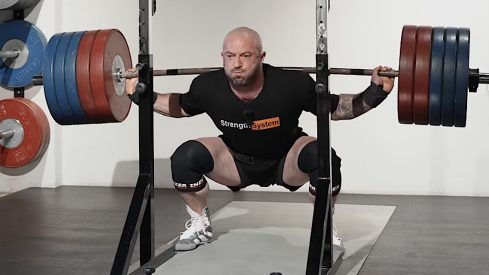Latest News
-
2025 Xtreme Bodybuilding Mexico Pro Show Preview
The 2025 Xtreme Bodybuilding Mexico Pro will be held in Tijuana, Mexico, on Sunday, July 27. It will include 2025 Olympia qualifying contests for the IFBB Pro League’s Classic Physique and Wellness divisions. The winners of each contest become eligible to represent their category at the 2025 Olympia in Las Vegas, NV, on Oct. 9-12. Sixteen athletes will take the…
Crossfit
-
Meet the 2025 CrossFit Games Demo Team
On Thursday morning, CrossFit announced the demo team for the 2025 CrossFit Games, which start on Friday, August 1, in Albany, NY. Remind me: Each year, Dave Castro assembles a demo team composed of elite CrossFit athletes – some with Games experience, others without – to test workouts and showcase each event during the Games.…
Strongman
-
Is Martins Licis Following the Strongman-to-Arm-Wrestling Pipeline?
2019 World’s Strongest Man (WSM) and 2022 Arnold Strongman Classic champion Martins Licis has been absent the competitive strongman scene to recover from a right-leg sciatica injury. During his recovery, Licis embarked on a global journey for his “Strength Unknown” series in which he immerses in diverse cultures to explore their histories in strength. The former strongman champion has…
Weightlifting
-
Try This Mobility Routine to Help Your Olympic Lifts
Mobility enables athletes to execute Olympic lifts with proper technique. Adequate mobility helps establish full range of motion, efficient movement patterns, and stability during dynamic lifts. In mid July 2025, sports performance coach and British Olympic weightlifting expert Sonny Webster shared exercises specifically tailored to improve Olympic lifts. Mobility Routines to Help With Olympic Lifts Ankle Dorsiflexion Ankle…
Powerlifting
-
Powerlifting United to Introduce New Lighting System for Meets
Powerlifting United (PLU) announced the introduction of a new color code system for their upcoming meets, starting with the PLU Nationals in Teaneck, NJ, on July 25-27. The traditional red and white lights will be in place to confirm bad or good attempts, but the red lights will be accompanied by a red, blue, or yellow “flag” underneath…
Bodybuilding
-
Charles Glass’ Top 4 Exercises for Thicker Triceps
“If your arms still look soft from the back, it’s not your genetics, it’s your triceps training,” renowned bodybuilding coach Charles Glass said. Muscle is approximately 15 to 20% denser than lipid-rich fat cells due to its protein and water content. Though muscle still jiggles, it creates shape and density where fat doesn’t. (1) Triceps,…
More News
-
Mayhem, Kriger, Invictus – Top Teams to Watch in a Balanced 2025 CrossFit Games Field
The team division at the CrossFit Games is always full of grit, chemistry, and chaos — and 2025 looks to be no different. That said, the CrossFit Games is compressed this year, with only 20 teams traveling to Albany to fight for a podium spot. While the field is 10 teams smaller, the squads that…
-
2025 Irish Strength Cup Results
-
CrossFit HQ Delivers Safety Updates Ahead of 2025 CrossFit Games
-
2025 Strongest Man in the Netherlands Results
-
How Much Does It Cost to Chase the CrossFit Games Dream?
-
Try This Mobility Routine to Help Your Olympic Lifts
-
A Pro Powerlifter’s Trick for Bench Press Strength

























